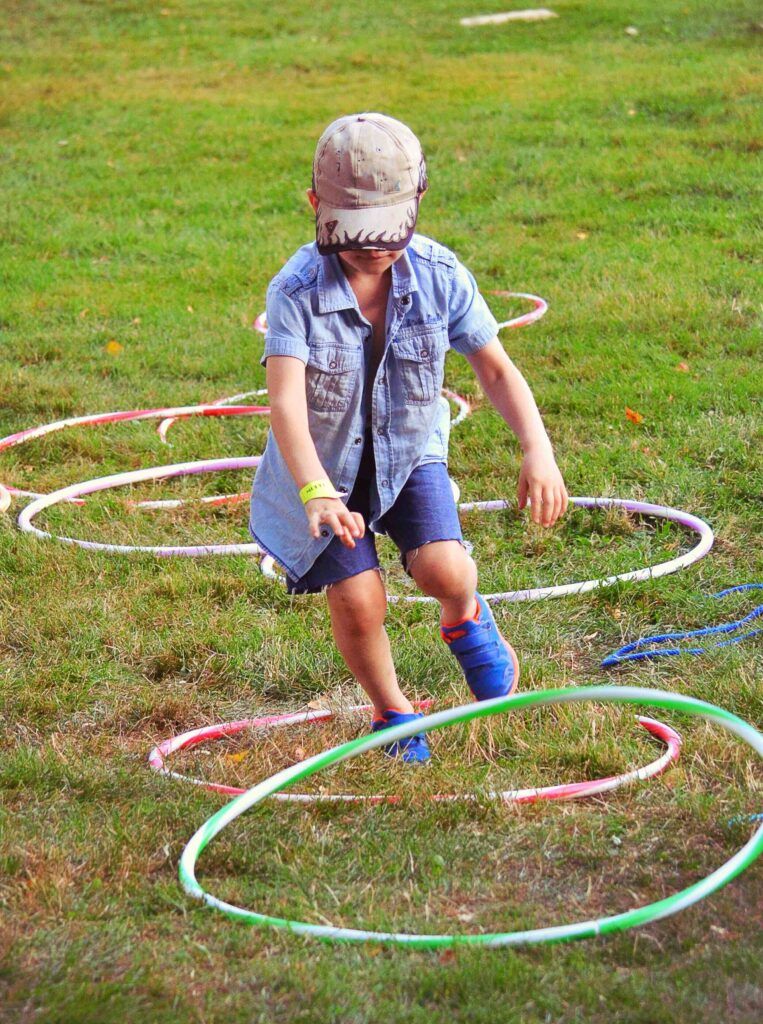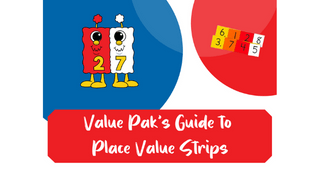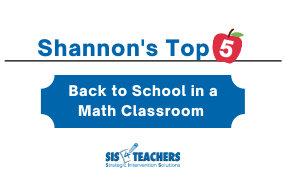Multiplication isn’t a new topic for our blog – we’ve talked about our multiplication journals and lots of games like Multiplication Bump! or Multiplication Speed! But, today, we’re going to rewind to the very beginning – how to introduce multiplication!

To really introduce multiplication correctly, I think it’s important to add the K (kinesthetic) to the CPA or Concrete, Pictorial, and Abstract. Today, I want to show you how to do that at the beginning of your multiplication unit as students are just starting to learn the concept.
Set the Stage for a (Productive) Struggle
First and foremost, we want students to really understand what multiplication is, but just telling them robs them of the productive struggle of figuring it out! Before you bring any kind of lesson or even a mini lesson on multiplication, we want students to discover for themselves, in an inquiry-based activity, what multiplication is. I like to do that kinesthetically by having students act out what multiplication means with their physical bodies. This is far more meaningful to students than being told exactly what things are.
With more of us going back to virtual school rather than in-person school, we always want to have options in case doing this activity face-to-face isn’t possible. I created a video and a PowerPoint presentation that help you be able to do this activity in either setting. M³ Members – download it here!
Start with 12 students and have them come to the front of the classroom, the gym or even outside on the playground. You can have more than 12, it would just add to the inquiry because not everyone is going to fit into a group with the problem we’re about to solve. You might also want some hula hoops to help you mark your “groups of” later, but this can also be done with no equipment.
Write a statement on a board or piece of paper, we’ll use 3 x 4, and tell students you want to see what they know about multiplication. Here are some things students might say:
- “I know you want me to do 3 multiplied by 4.”
- “I know the answer is 12.”
- “You want me to do repeated addition.”

Then have the students physically show you what that problem would look like, using themselves as the units. You want them to show you the idea of “groups of,” even if they haven’t said those words yet. Honestly, it might be better that way because saying “groups of” kind of gives it away!
As I’ve done this with students, it’s so interesting to watch how they process! The hardest part is not directing students on where to go. They have to figure it out on their own!! While they’re working, students might realize that they need 12 total, but they might not have the four groups of three. Instead they might have three groups of four. Stay strong and don’t point it out!
Ask the class if they agree that the way that the students are organized is representational of 3 x 4? This conversation will be a great way to help that language emerge as students start to understand that, instead of saying times or multiplied by, the x actually means “groups of.” This will help them understand what multiplication really means, and it will be so much more memorable because they got to physically act it out.
If you look out and there are three groups of four, you might ask the students to try it again a different way. See how they react, and if they’re stumped, you can prompt them by saying, Can you show me the way the statement is written – 3 x 4?
We can continue the inquiry if we change the sample problem to 4 x 3. Ask, Would the answer change? Some will say no and recognize that it’s still 12, some won’t. This is where we can start to see the commutative property come into play. We want students to understand rows and columns and arrays and all those great things that come with multiplication, and letting students play with this, switch up their groupings, will help solidify this principle. Side note: I wouldn’t go higher than four in a group, otherwise it gets a little chaotic!
The most important part of this activity is that you, and any other adults that are present, say NOTHING! Don’t swoop and save the students, let them have that productive struggle. Let them have conversations with each other and you’ll be able to see which students speak up and which students agree or disagree. This kind of engagement also helps kids communicate their thinking and promotes the idea of being a community of math learners.
What about Virtual Learners?

Now, some of us are saying, Sounds like a great idea, Shannon, but ‘m teaching virtually. How am I going to go about doing all that? Well, the great part is, if you’re a part of our M³ (Molding Math Mindsets) Membership, we have presentations and videos that you can use in your (virtual) classroom right away! If you’re not a member, these resources are really inexpensive and you could get them really easily.
If you can’t have students acting out multiplication, the PowerPoint presentation does it for you so you could still go through this same activity on Zoom, or maybe even on Google Meet, and kids would still be able to understand the kinesthetic part of multiplication.

Have students look at the pictures of the 12 heads or the 12 students that we show in the PowerPoint, which is designed to provoke deeper thinking in the way that the students are arranged. In one picture for 4 x 3, I might show three groups of four. To make this open-ended and inquiry-based in a virtual setting, as What do you notice? Some students won’t even notice and will say, yeah, there are 12 kids there so that’s right! Some will say, There are three groups of four. That’s the same as four groups of three, so the way I see it on the slide is correct.
On the slide that says What do you wonder? you really want to dig deeper and have them talk more about what they’re seeing. This is also the time to find out the misconceptions they might have. When doing this virtually, you have to be careful not to just give it away, but to really provoke kids to turn their camera on or type in the chat and engage. Maybe ask What are you thinking about the way this is? Making sure to point out that there’s not a right or wrong answer.

Of course, in the progression of the PowerPoint, we eventually show 4 x 3 (four groups of three) done correctly, and so we can, of course, elicit conversations about what it really means when you see that x.
We go through about four or five different problems on the PowerPoint so that we can really help students to be able to understand this concept. As you work through the problems together, clarify misconceptions as needed, but really remember that self-discovery is what is going to help students remember this concept the most.
Getting Technical
As you start to see what students are understanding about what multiplication means, you might create a T-chart or anchor chart of their definition(s). Some kids might connect with the idea of repeated addition – If I’m doing four groups of three, it’s like three plus three plus three. Some students might realize that multiplication is the opposite of division – If I had 12 and divided it into four equal groups I’d have three in each one. Others will see that it means “to multiply” or showing multiples of a number.
We do want students to be able to use the correct language, which we show in the PowerPoint. What are the numbers 4 and 3 called in 4 x 3? They’re the factors. What does that x mean? “Groups of.” What do we call the answer, 12? It’s not the sum, it’s the product.
The more that you demand that students use appropriate mathematical terms, and the more you use that language and model it, the more students are going to really start to understand those different terminologies.
Area Models (Arrays) and Commutative Property
As students deepen their understanding of multiplication and start using rows and columns to make area models, like we do in our multiplication journal, it’s really important that kids understand the commutative property. They need to understand that, if I’m looking at it one way, I have four groups of five, and the other way, it’s five groups of four.

Building Arrays is a really fun activity (check out our video tutorial here!) where students practice building arrays by rolling a die. The first number they roll will be the number of rows, and the second will be the number of columns in each row. Then, students will draw the array, using the pictorial, and then abstractly write the possibilities for a certain problem. So, if they rolled a 5 and a 4, they could look at the repeated addition. Students would know that it’s five groups of four, but it also could be written “four groups of five. This really helps students to just slow down a little bit before we start to get really fast into the ideas of multiplication.

You could help students with the idea of rows and columns by relating it to a football game or a concert. Do I want to sit in row 105 or row 1? And then how many are in my row? How many friends do I have with tickets in that row? Relating it to something like building an array will help them to understand it a little better.
In our next blog, we’re going to talk about how to bring multiplication to the concrete level as we bring in place value discs. Being able to do a kinesthetic activity like this, and then follow it up with concrete place value discs is so power for third graders! Don’t miss it!



